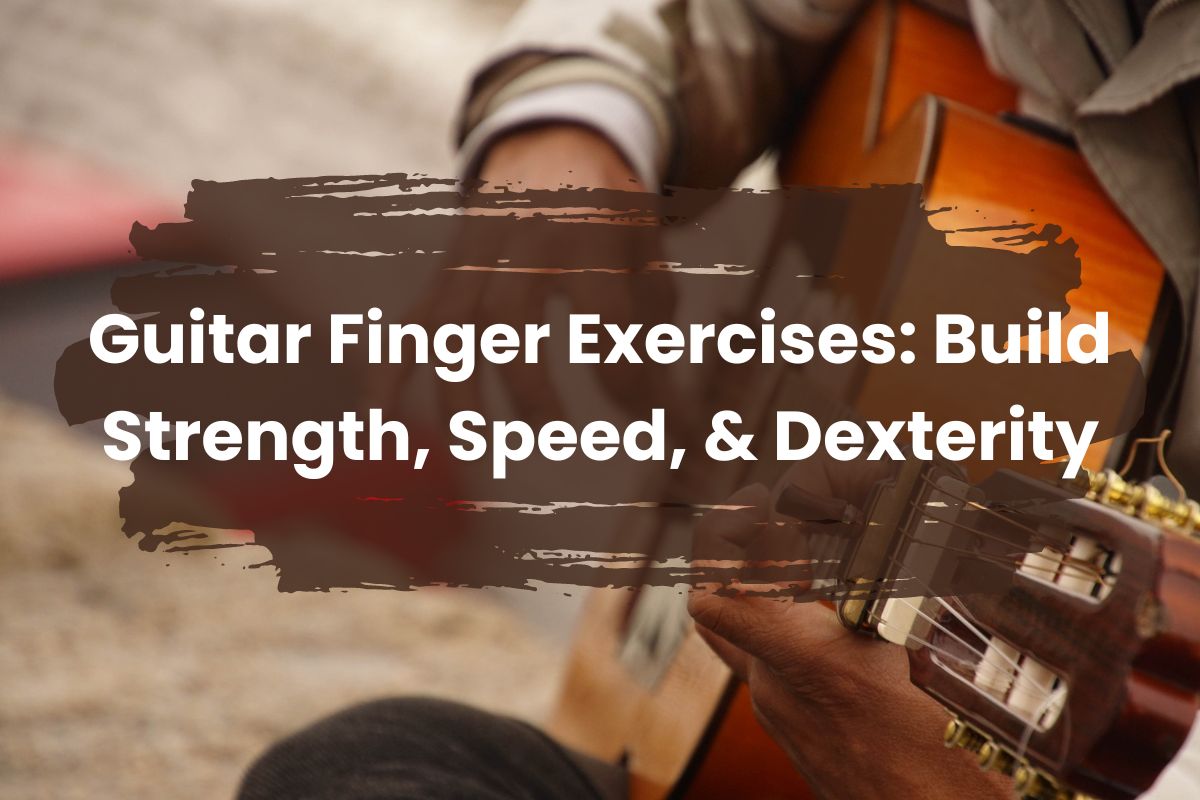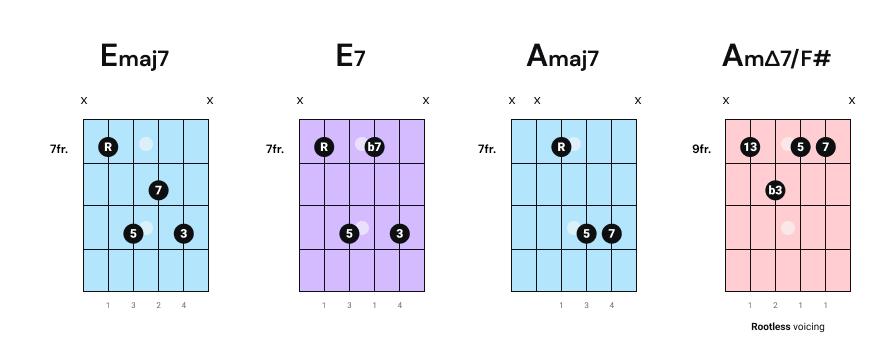Calling all guitarists! Are you tired of your transitions sounding as graceful as a walrus trying to do ballet? Have you been stuck in a rut, unable to smoothly flow from one chord to the next without sounding like you’re auditioning for a death metal band? Fear not, dear strummers, for we have the ultimate guide to refining your transition techniques and taking your guitar playing to the next level. So grab your guitar, buckle up, and get ready to rock and roll your way to transition perfection!
Contents
- 1
- 2 Mastering Hammer-Ons and Pull-Offs for Fluid Movement
- 3 Exploring the Use of Slides to Connect Musical Phrases
- 4 Incorporating Bends for Expressive Transition Techniques
- 5 Leveraging Tapping for Advanced Transitional Play
- 6 The Role of Vibrato in Enhancing Musical Transitions
- 7 Optimizing Guitar Setup for Effortless Transitional Techniques
- 8 FAQs
- 9 Rock on, Transition Master!
smooth-transitions-on-the-guitar”>Understanding the Art of Smooth Transitions on the Guitar
So you think you’re a guitar pro, huh? You can shred like nobody’s business and have the calluses to prove it. But what about those smooth transitions between chords? Ah, that’s where the real magic happens. Mastering the art of smooth transitions on the guitar takes finesse, skill, and a touch of je ne sais quoi.
Here are a few tips to help you level up your transition game:
- Practice, practice, practice: Like anything worth mastering, smooth transitions take time and effort. Set aside dedicated practice time each day to focus on transitioning between chords with ease.
- Focus on your finger placement: Pay attention to where your fingers need to be for each chord and make sure they’re in the right position before you strum. Precision is key!
- Use a metronome: Timing is everything when it comes to smooth transitions. Practice with a metronome to help you stay on beat and improve your rhythm.
Remember, Rome wasn’t built in a day, and neither were the smoothest transitions on the guitar. Keep at it, stay patient, and before you know it, you’ll be gliding effortlessly between chords like a true guitar virtuoso.

Mastering Hammer-Ons and Pull-Offs for Fluid Movement
So, you’ve picked up your trusty guitar and you’re ready to take your playing to the next level. You want your fingers to dance effortlessly across the fretboard, creating smooth and fluid melodies that would make even Jimi Hendrix jealous. Well, my friend, it’s time to master the art of hammer-ons and pull-offs.
First things first, let’s talk about hammer-ons. This technique involves using your fretting hand to quickly press down on a string to produce a note without plucking it with your picking hand. It’s like magic, but with more calluses. To master hammer-ons, remember these key points:
- Use your fingertips to apply pressure
- Keep your hand close to the fretboard
- Practice transitioning between hammer-ons and regular notes for maximum effect
Now, onto pull-offs. This technique is like the rebellious sibling of hammer-ons. Instead of adding notes, pull-offs involve removing your finger from a fret to produce a sound. It’s a cheeky move that adds flair to your playing. To perfect your pull-offs, keep these tips in mind:
- Use a swift motion to pull your finger off the string
- Keep your other fingers ready for action
- Experiment with different finger combinations for cool effects

Exploring the Use of Slides to Connect Musical Phrases
So, you’re looking to amp up your music game by . Well, look no further, because we’ve got the scoop on how to slide your way to musical greatness!
First things first, let’s talk about the basics of slides. Slides are a great way to add some smoothness and fluidity to your playing. It’s like buttering up your music - everything just glides together seamlessly. Plus, using slides adds a touch of flair and sass to your performance. Who doesn’t want to be a little extra, am I right?
When using slides to connect musical phrases, there are a few things to keep in mind. Here are some pro tips to help you slide like a rockstar:
- Experiment with different slide lengths: Short slides can add a quick, funky vibe to your music, while longer slides can create a more dramatic effect.
- Don’t be afraid to slide in different directions: Whether you’re sliding up, down, or sideways, mixing up your slide directions can add some extra spice to your playing.
- Practice, practice, practice: Like anything worth doing, mastering the art of sliding takes time and dedication. So, slide on, my friend!

Incorporating Bends for Expressive Transition Techniques
Remember how boring guitar solos used to be before bends were a thing? Yeah, we don’t either. But hey, why not take your bending game to the next level with some expressive transition techniques?
Utilize half-step bends: Want to add some tension to your solo? Half-step bends are your best friend. Just a little nudge on the string can create a whole new vibe that’ll make your audience go “whoa.”
Experiment with full-step bends: Feeling adventurous? Go for the full-step bend. It’s like the rollercoaster of guitar techniques – unexpected, thrilling, and sure to make you feel like a rockstar.
Combine bends with vibrato: Ah, vibrato – the cherry on top of your solo. Combine it with bends for a tasty musical treat that’ll have your listeners begging for more.

Leveraging Tapping for Advanced Transitional Play
So you’ve mastered the basics of tapping, huh? Well, get ready to take your transitional play to the next level with these advanced tapping techniques. Remember, practice makes perfect, so don’t get discouraged if you don’t nail it right away!
Here are some key strategies to help you leverage tapping like a pro:
- Staccato Tapping: Try using quick, staccato taps to create a more dynamic and unpredictable rhythm. This can throw off your opponent and give you that extra edge in the game.
- Fluid Transitions: Work on smoothly transitioning between tapping and other techniques like strumming or picking. The goal is to make your playing seamless and effortless.
- Rhythmic Variations: Experiment with different tapping patterns and rhythms to add depth and complexity to your playing. Mix it up and keep your audience on their toes!
With these tips in your arsenal, you’ll be well on your way to becoming a tapping master. Remember, it’s all about having fun and exploring new ways to express yourself through your playing. So get out there and rock on!
The Role of Vibrato in Enhancing Musical Transitions
Picture this: you’re listening to a beautiful piece of music, fully immersed in the melody, and then suddenly… *nothing*. The transition from one note to the next feels as smooth as trying to parallel park on a narrow street. Enter vibrato, the secret weapon in a musician’s arsenal to make those musical transitions seamlessly buttery.
What exactly is vibrato, you ask? Well, it’s like the fancy footwork of the music world. By subtly oscillating pitch, vibrato adds depth, emotion, and yes, even drama to a musical passage. It’s the equivalent of sprinkling glitter on a bland outfit - suddenly, it’s party time! Without vibrato, those musical transitions can fall flat, like a deflated balloon at a birthday party.
Think of vibrato as the musical equivalent of a charming French accent – it just makes everything sound more sophisticated and interesting. With vibrato, even the most mundane musical phrase can suddenly sound like a highbrow composition straight out of a fancy concert hall.
So, the next time you’re jamming out to your favorite tune, pay attention to the role of vibrato in enhancing those magical musical transitions. It might just be the key to unlocking a whole new level of musical enjoyment. Plus, who doesn’t love a little extra flair in their playlist?
Optimizing Guitar Setup for Effortless Transitional Techniques
When it comes to effortlessly transitioning between different guitar techniques, having the right setup is crucial. With a few tweaks and adjustments, you can make your guitar playing experience smoother and more enjoyable.
One of the first things you can do is make sure your strings are properly stretched and tuned. There’s nothing worse than trying to pull off a killer guitar solo only to have your strings go out of tune mid-song. Take the time to stretch your strings properly before playing, and invest in a good tuner to keep them in tune.
Another key aspect of optimizing your guitar setup is adjusting the string height and action. Lowering the action can make it easier to play fast licks and transitions, while raising it can give you more control over your bends and vibrato. Experiment with different heights until you find what works best for your playing style.
Lastly, don’t forget to lubricate your guitar’s nut and bridge to reduce friction and improve tuning stability. A little bit of graphite or nut sauce can go a long way in making your guitar feel smoother and more responsive. With these tips in mind, you’ll be on your way to mastering those tricky transitional techniques in no time!
FAQs
What are some common mistakes guitarists make when transitioning between chords?
Oh, where do I begin? One common mistake is trying to switch chords too quickly, resulting in a cacophony of sound that even your neighbors can’t handle. Another mistake is neglecting proper finger placement, leading to a sloppy and unrefined sound. And let’s not forget the classic blunder of forgetting which chord comes next – trust me, your audience will notice.
How can guitarists improve their transition techniques?
Practice, practice, practice! But not just any practice - focused practice. Take the time to slow down and really pay attention to your finger movements. Try practicing with a metronome to help keep your timing in check. And don’t be afraid to break down the transitions into smaller, more manageable parts.
Are there any exercises or drills that can help improve transition techniques?
Absolutely! One great exercise is to practice transitioning between two chords repeatedly, focusing on smooth and seamless movements. Another helpful drill is to practice chord progressions at a slower tempo, gradually increasing speed as you become more comfortable. And of course, don’t forget about good old-fashioned finger exercises to strengthen those digits.
What role does muscle memory play in refining transition techniques?
Muscle memory is like your trusty sidekick when it comes to transitioning between chords. The more you practice a specific movement, the more ingrained it becomes in your muscle memory, making it easier for your fingers to find their way without you having to think about it. It’s like riding a bike – once you learn, you never really forget.
Any final tips for guitarists looking to improve their transition techniques?
Don’t get discouraged! Transitioning between chords can be one of the most challenging aspects of playing the guitar, but with dedication and perseverance, you’ll get there. Remember to keep a positive attitude, stay patient with yourself, and most importantly, have fun with it. After all, music is meant to be enjoyed, not stressed over. So keep strumming, keep practicing, and before you know it, you’ll be transitioning like a pro.
Rock on, Transition Master!
Congratulations, you’ve now mastered the art of refining transition techniques on your guitar! Keep practicing, keep rocking, and keep dazzling your audience with your smooth transitions and killer riffs. Remember, transitions are like the seasoning in a rockin’ guitar solo – they add that extra flair and flavor that make your playing stand out. So keep refining, keep experimenting, and keep shredding like the rockstar you are. Until next time, keep on playing and keep on rocking!



